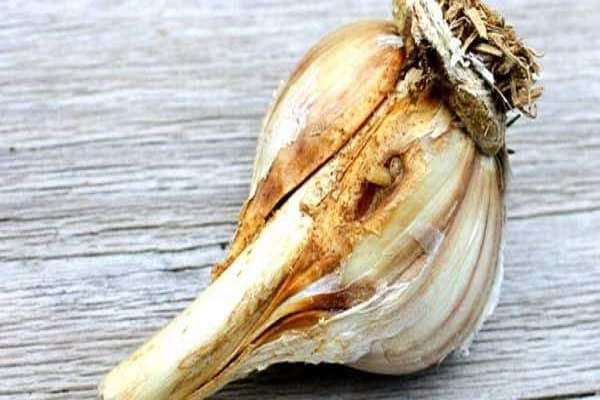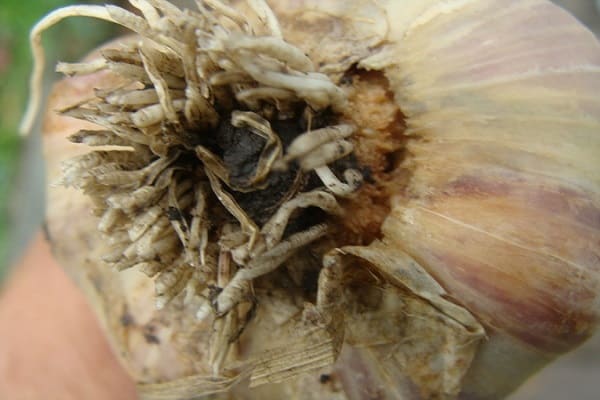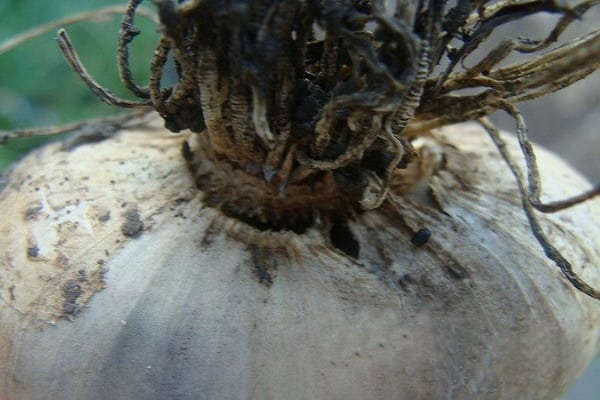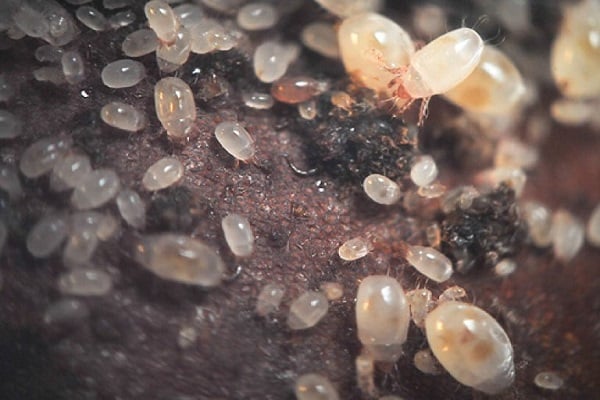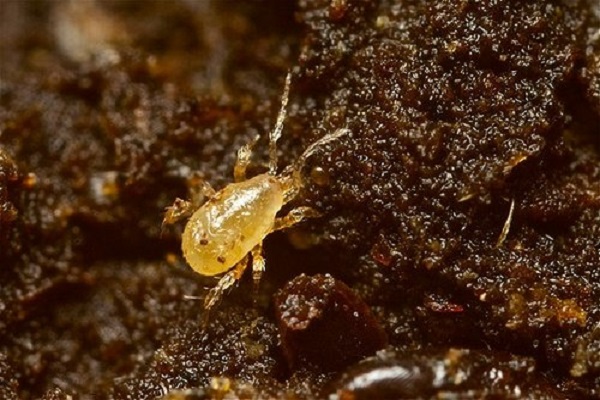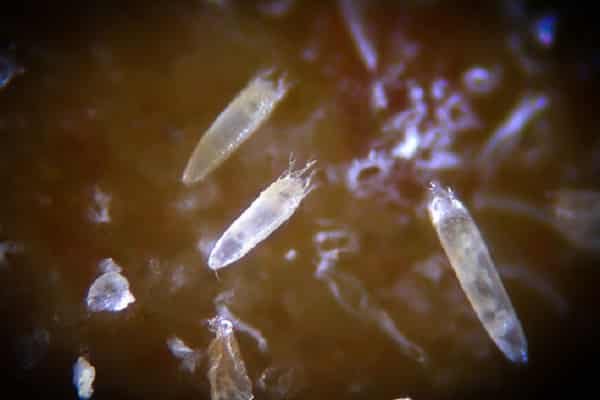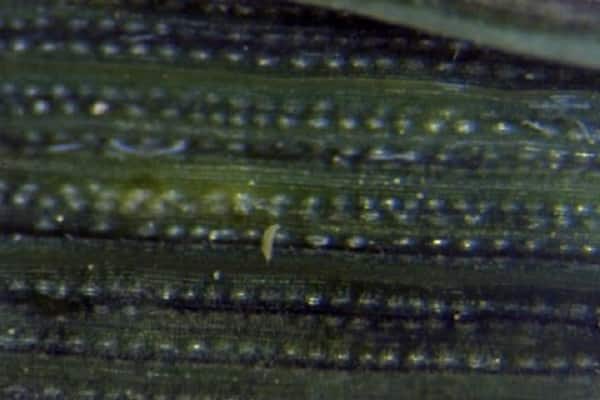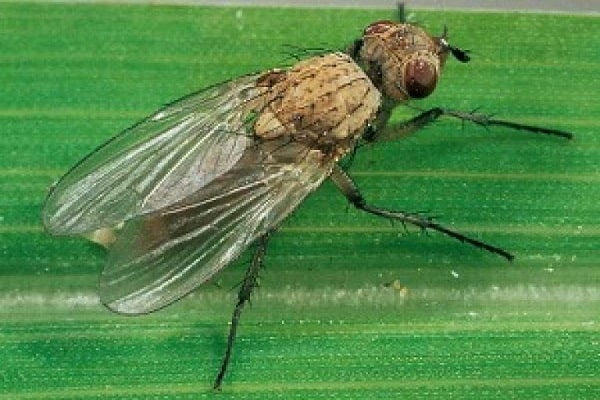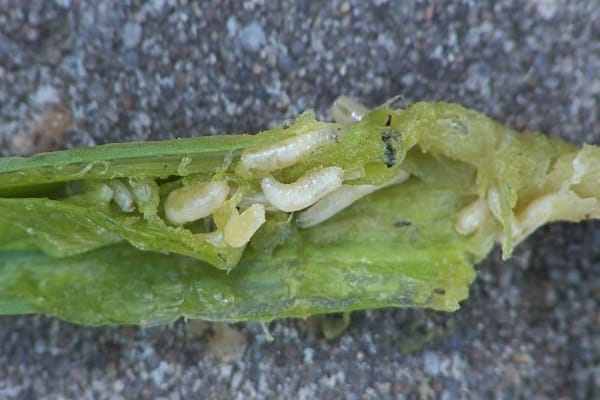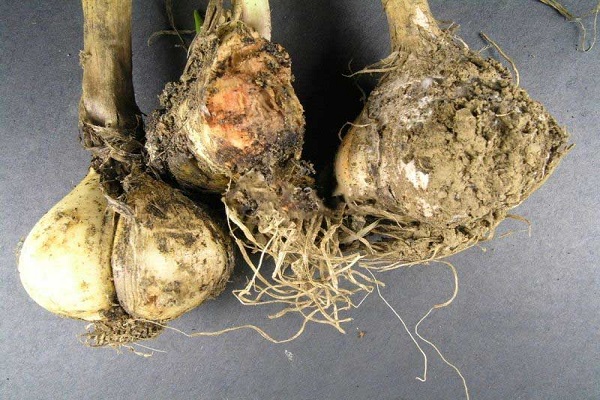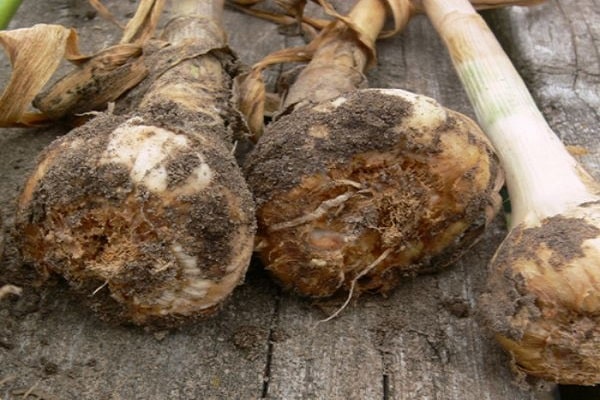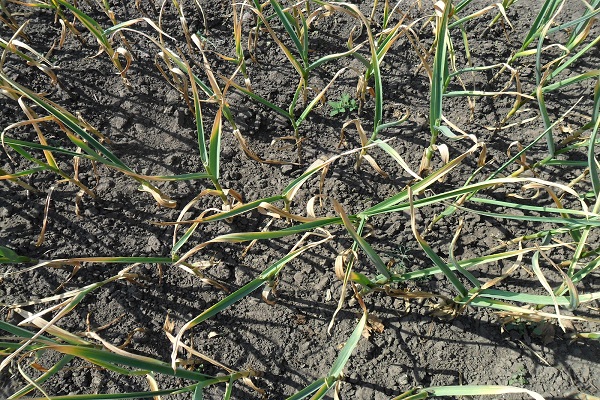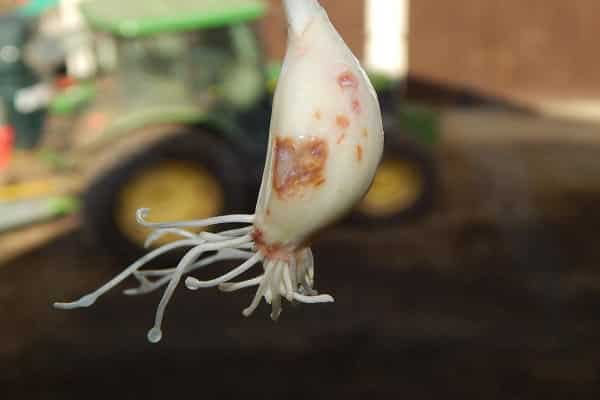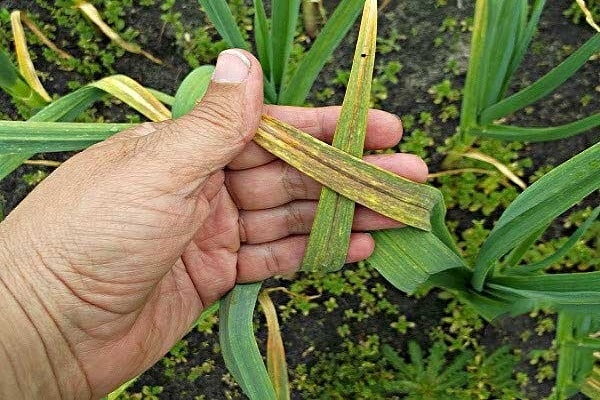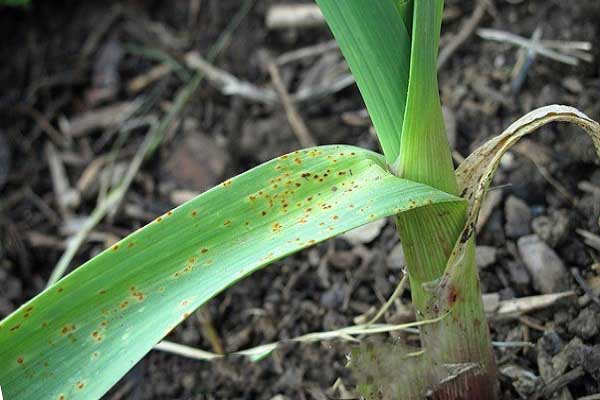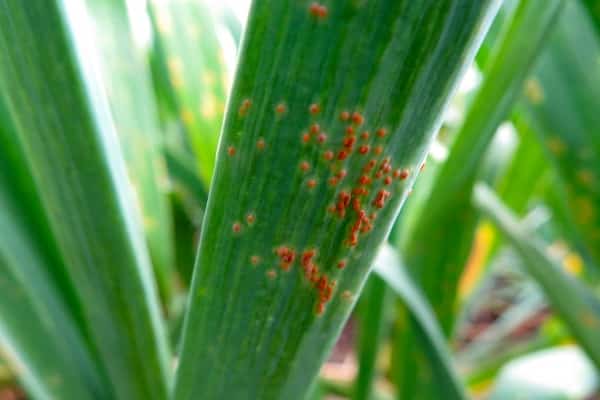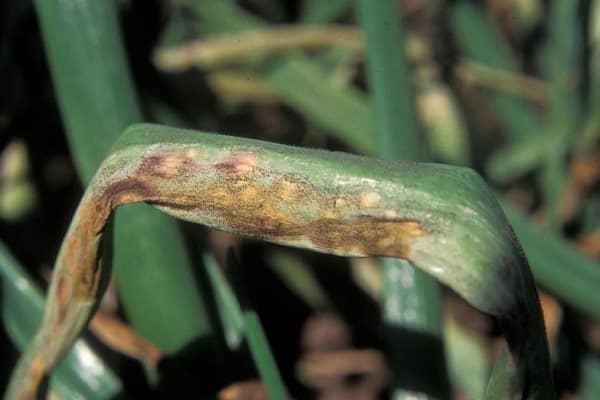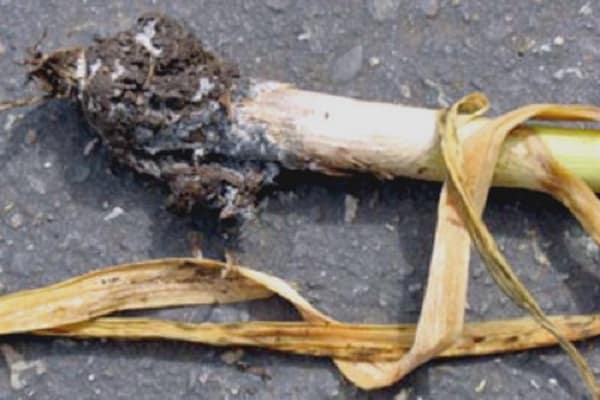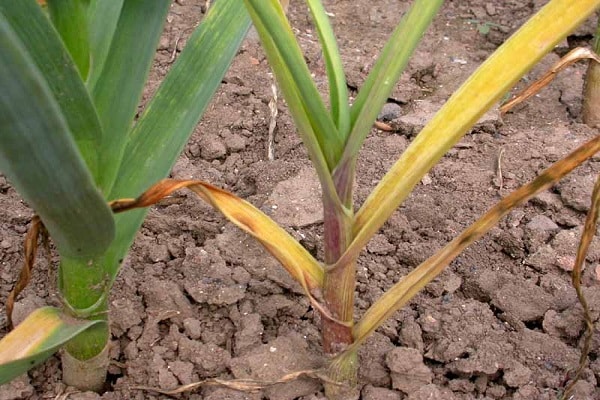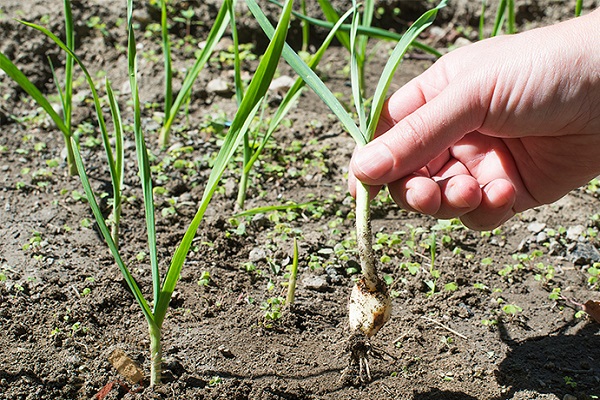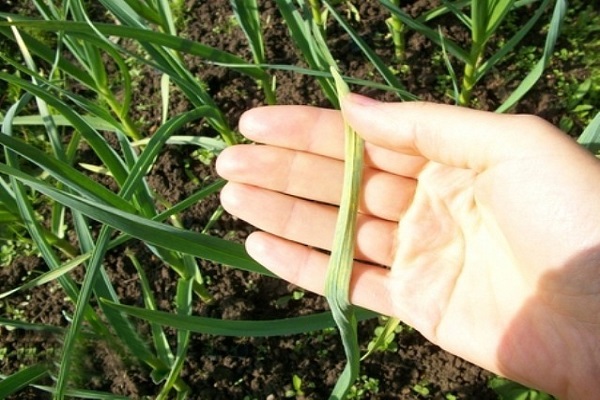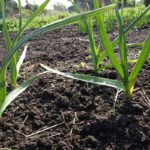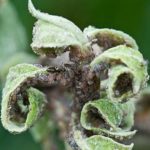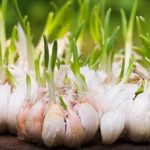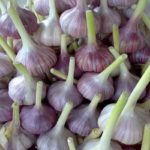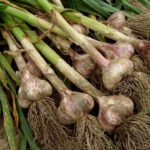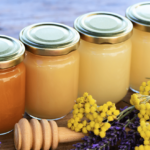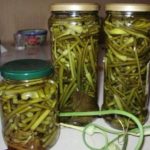Garlic is exposed to various diseases and pests no less often than other cultivated plants. To know how to prevent their appearance or development, you need to be able to recognize the symptoms of garlic diseases and fight them regularly. Garlic dies from a narrow list of pests and diseases, and other pathogenic factors are simply not able to cope with this insecticide. Most often, garlic is exposed to fungal diseases and becomes moldy in the ground; to prevent this, you need to know what to do when the primary symptoms of such diseases appear.
Garlic pests
Garlic pests stop the growth of the plant and gradually lead to its death. Moreover, many insects contribute to the spread of dangerous garlic pathologies.
To prevent this, it is necessary to treat garlic against pests using repellent compounds. The best of them is an ash solution, which is prepared according to the instructions:
- A glass of wood ash is added to a bucket of hot water.
- Everything is mixed and infused for 1 day.
- 40 grams of liquid soap are added to the resulting liquid.
The prepared product is used to treat the soil and plants.
Stem nematode
The most dangerous pest affecting garden crops is the stem nematode. It is a thread-like worm, the length of which can reach 1.5 millimeters in length. The worm feeds on plant sap and gradually completely destroys the crop. Therefore, every summer resident is obliged to begin their treatment and prevention of garlic disease in time to protect it from the next infection. You can recognize the presence of a pest by the following symptoms:
- light lines appear on the leaves;
- garlic feathers gradually dry out and curl;
- a pungent smell of rot begins to emanate from the plantings;
- the bulbs dry out.
The stem nematode violates the integrity of the bulb, which is why the appearance of neck rot of garlic is often observed. This pathology and pest completely destroys the plant and the crop.
The most effective way to combat stem nematodes that attack garlic is to treat the plantings with Calypso. The mixture should be used to control pests strictly according to the instructions included with it.
Onion root mite
The most common insects that attack garlic are root mites. The size of their body is no more than 0.7 millimeters in length, and its color resembles a clouded piece of glass. Over the course of 1 month, a sexually mature individual grows from the laid eggs, and during the season, several generations of insects are formed.
It is possible to recognize garlic pests and fight them only on the basis of the symptoms that appear:
- the appearance of brown dust on the bulbs;
- peeling of the bottom;
- fruit rotting.
If you store an infected crop, the mite persists, and the infection causes the heads to dry out.
If the mite has already infected the planted crop, it is recommended to use the following control measures to eliminate it from the garlic: treatment with Clofentezine or Dimethoate-400. In the early stages of pathology development, Actellik or Neoron can be used.
Garlic four-legged mite
You can recognize the presence of this garlic pest by the corresponding symptoms. The plant crop is damaged as follows:
- leaves curl along the midrib;
- the leaves begin to turn yellow at the edges;
- the cloves become dark green or covered with yellow spots.
These mites are very dangerous as they cause mosaic.
To combat this mite, it is necessary to use acaricides by treating storage facilities before planting the crop, and to spray the crop during the growing season. To reduce the risk of contamination of the crop in storage, it is necessary to dry it for 1 week at a temperature of 35–37 degrees.
Onion fly
Such garlic pests reach a length of 8 millimeters, with a wingspan of 14. You can recognize a fly by knowing the description of the pest:
- the body is brown in color;
- the edges of the wings are edged with fringe;
- the insect lays eggs in early June.
The pest damages the feathers of garlic, which greatly slows down its growth and productivity. How to deal with garlic pests:
- 250 grams of shag mixed with a spoon of hot pepper.
- The mass is mixed with 2 liters of hot water and infused in a warm place for 3 days.
- Everything is filtered, diluted to 10 liters and mixed with 30 grams of liquid soap.
To combat insects, the resulting infusion should be sprayed on the plant crop and soil once a week during May, and then re-treated in July.
Garlic diseases
Most garlic diseases are fungal or bacterial in nature. In advanced cases, such pathologies can destroy most of the crop, so when they occur, control measures must be taken immediately.
One of the most common pathologies is garlic downy mildew. It manifests itself:
- yellowing of the upper part of the stem;
- gradual drying of the stem;
- growth slowdown.
When optimal environmental conditions are formed, the fungus actively spreads and can affect all planted crops. Therefore, it is important to prevent the occurrence of peronosporosis. Since the pathology is not able to develop in bright light and elevated temperatures, its prevention is carried out in the following way:
- before sowing, the cloves are warmed up in the sun for 2 days, and it is desirable that the ambient temperature reaches 40 degrees Celsius;
- the harvested crop is heated in the same way;
- Before sowing, it is necessary to thoroughly clean the soil from organic residues and disinfect it.
The cause of the development of this disease is the use of contaminated material for sowing, organic residues in the soil, and the spread of fungal spores by wind. To combat it use:
- Thiram - strictly according to the instructions.
- Fentiuram - add 3 kilograms to 10 liters of water.
- Polycarbocin - 40 grams of the drug are used for a similar volume of liquid.
- Arcerida - 30 grams of product dissolve in 10 liters.
To treat the seed, you can use a 2–3% solution of the drug Thiram. The cloves are soaked in the solution for 20–25 minutes.
Garlic bacteriosis is another type of pathology that can destroy almost the entire crop. This pathology affects garlic during the growing season, during crop storage. Infected teeth rot and do not form seedlings. On tubers, pathology manifests itself as yellow and brown lesions. In some cases, the teeth become transparent and then acquire the consistency of mucus.
To minimize the risk of garlic becoming infected with a bacterial disease, you must:
- treat the soil with Hom;
- Maintain a gap of 4 years between sowing in one place;
- pre-fertilize the soil with phosphorus;
- remove organic residues before sowing;
- maintain the full ripening period of the vegetable;
- remove the tops only after drying; at a temperature of 23–30 degrees, this process takes 10 days.
It is also recommended to use insecticides to reduce the activity of insect pests, treat the seed with formaldehyde, and observe crop storage conditions: humidity no more than 60–70%, temperature 1–4 degrees for winter garlic and 16–18 for spring garlic.
Garlic rust
Rust is a type of garlic disease that affects crops and appears as yellowish stripes. Gradually these stripes become wider, and then they fill the entire leaf plate. In some cases, rust does not appear as dashes, but as yellow round spots, which over time acquire a reddish tint and a convex shape.
Under the influence of this disease, you can lose a significant part of the crop. Such harm is caused by the fact that the plant gradually loses its leaves, the activity of nutrient accumulation decreases, and the heads do not grow. The likelihood of this disease occurring can be reduced if prevention is carried out before sowing. To do this you need to use the instructions:
- The slices are filled with a 40% formaldehyde solution and left for 2 hours. You can make it by mixing 40 milliliters of formaldehyde and 120 liters of water.
- The beds are watered with a solution prepared from 10 liters of water and 15 milliliters of Fitosporin-M. If this composition is not available, you can replace it with a 1% solution of Bordeaux mixture or copper oxychloride.
- Only after such treatment can you begin to sow the crop.
If planted garlic gets rust, it needs to be treated with copper sulfate or the fungicide Hom. The greatest effect is obtained from a mixture made from Hom and finely grated tar soap. It is necessary to irrigate the stems once every 10–14 days. The irrigation procedure should be completed 30 days before harvest.
In addition to these drugs, anti-peronosporosis agents can be used to combat rust:
- Alirin-B.
- Gamair.
- Cuproxat.
- Champion.
- Medyan Extra 350.
These anti-rust drugs increase the plant's resistance to pathologies.
Black mold of garlic
Black mold is a type of garlic disease that rots vegetables in storage and also kills plantings. This pathology is activated if there is poor ventilation in the storage facility and is manifested by the appearance of black spores that look like dust. Gradually the cloves soften and rot.The greatest risk of developing black rot is carried by poorly dried or insufficiently ripe fruits. Also, rotting on garlic can occur if the planting is kept for more than 6 hours in conditions of high humidity.
Control measures to combat infection will eliminate garlic disease. For this, it is recommended to use Bordeaux mixture. 3 weeks before harvest, the beds are irrigated with a 1% composition. Also, to combat black rot, you can use drugs recommended for eliminating bacteriosis.
Fusarium of garlic
Fusarium most often appears in southern climates. This pathology affects the plant in the ground during the growing season. The fungus is activated at ambient temperatures of 15–30 degrees and increased humidity levels. The cause of this pathology may be the remains of a past infected crop in the ground, or the use of water for irrigation with fusarium spores. Therefore, for sowing it is necessary to select only whole cloves; any damage to their integrity threatens to contaminate the crop.
To determine the presence of pathology, you need to know its symptoms:
- yellowing of stems;
- drying of the tips of the stems;
- the appearance of brown stripes on the stems;
- formation of pink plaque in the leaf axils;
- softening the garlic heads;
- formation of pink, whitish or yellowish mycelium in affected areas;
- Root rotting.
To eliminate all pathological causes, prevention of fusarium is necessary, as well as knowledge of measures to combat it when garlic is damaged.Prevention consists of careful selection of seed, its treatment with Chromium, Fitosporin, Maxim, as well as watering the beds with disinfecting fungicides and eliminating all residues from last year’s harvest.
If fusarium of garlic manifests itself as primary symptoms on a growing plant, it is necessary to take control measures such as treatment with Quadris. If the disease does not subside, the affected plant must be discarded to prevent its spread.

